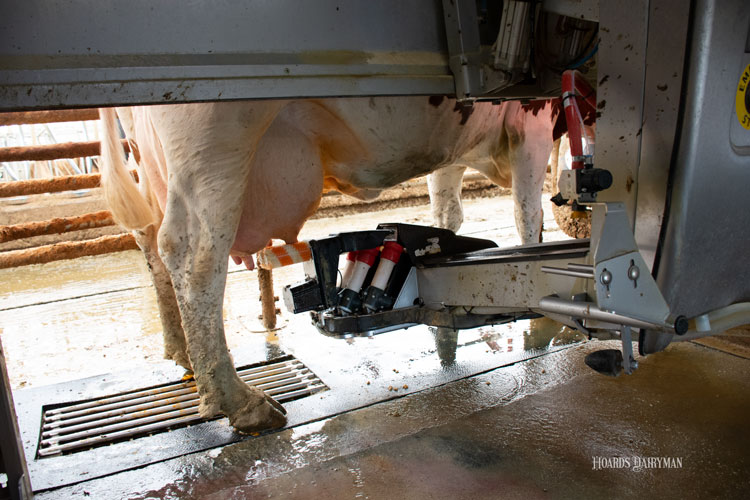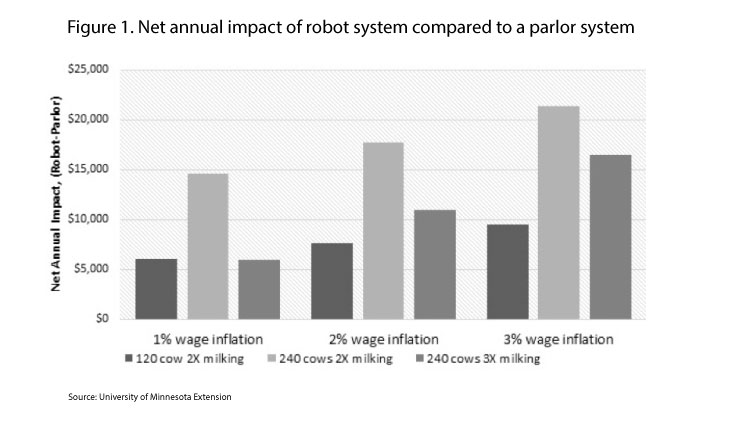
The potential benefits that robotic milking brings to the farm are becoming more clear — improved milk production, reduced labor costs, and enhanced reproduction.
At the same time, some farm expenditures will climb . . . mostly capital costs that represent a huge trade-off of capital for labor. As one dairyman said who was the first to install robots in the United States 18 years ago, “I prepaid my labor when I bought my robots.”
There also remain some debates around equipment lifespan, repair, and maintenance costs. In the end, the net impact on farm profit and cash flow remains unclear.
What have you learned?
A successful transition from conventional to robot milking often depends on the producer’s ability to learn and effectively utilize this technology. The true experts in managing robotic milking are those that have succeeded to manage this technology in the current economic environment.
We invite these experts to share their knowledge via our survey (click here) and to join a new virtual peer-to-peer community called ComMoonity–Robotic Milking where you can share questions, answers, and experiences to help improve your operation and that of others.
For prospective adopters of the technology, the current reality of the dairy market may make investment in robots appear like a farfetched idea. Limiting capital expenditure remains a central strategy for many farms.
Nonetheless, a recent article of Hoard’s Dairyman Intel highlighted the enthusiasm for robotic milking among some dairy investors. They reasoned that robots would become the norm within ten years.
Nobody knows what dairy markets will look like over the next few years, and many people appear to maintain cautious optimism. Given the price and market volatility that we have experienced, making major investments like robots now requires ever more strategic planning and careful analyses.
In the last few years, the University of Minnesota Extension has developed useful planning tools to help figure out the net impact of robotic milking on your farm. Figure 1 below shows the impact of robotic milking for different farm sizes and under different assumptions regarding labor wage increases. Click here to learn more about the comparison tool.






